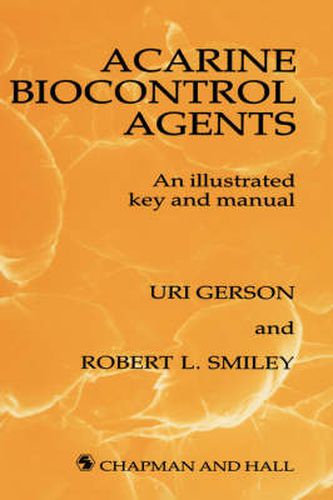Readings Newsletter
Become a Readings Member to make your shopping experience even easier.
Sign in or sign up for free!
You’re not far away from qualifying for FREE standard shipping within Australia
You’ve qualified for FREE standard shipping within Australia
The cart is loading…






This volume is intended to serve as an introduction to the employment of mites in the biological control of pests. The book begins with a brief historical review and discussion of some current work, and then presents keys to all acarine families known or believed to be of significance in pest control, including weed control. Each family is briefly characterized in the text in manual style and accompanied by a drawing, followed by discussion of the potential of its members in the biocontrol of pests. Pests, in the present context, are invertebrates, such as insects, mites and nematodes, which harm their plant or animal hosts to some economic measure, impair human health and are nuisances. Also included are weeds and plants which successfully repress or compete with agricultural crops, thus causing yield reductions and sometimes clog up waterways, unless appropriately controlled. Biological control of pests by mites, in the present context, means acarine activity - parasitism, predation, competition, plant feeding, disease transmission or other activities which reduces pest populations and the extent of their damage to below accepted economic or medical injury levels. Such control comprises biological control, introductions of natural enemies, as well as other strategies, such as augmentation and conservation. Also included in this book are natural as well as manipulated biological control brought about by human intervention. The book does not include all the mite families that have ever been recorded as being associated with pests, only those families that have one or more members which are known or postulated to have a detrimental effect on pest populations are included. Thus the 29 families discussed here represent only part of the mite families which can and do play a role in biological pest control and a further aim of this book is to promote more research into exploring, developing and realizing the potential of mites in the biological control of pests.
$9.00 standard shipping within Australia
FREE standard shipping within Australia for orders over $100.00
Express & International shipping calculated at checkout
This volume is intended to serve as an introduction to the employment of mites in the biological control of pests. The book begins with a brief historical review and discussion of some current work, and then presents keys to all acarine families known or believed to be of significance in pest control, including weed control. Each family is briefly characterized in the text in manual style and accompanied by a drawing, followed by discussion of the potential of its members in the biocontrol of pests. Pests, in the present context, are invertebrates, such as insects, mites and nematodes, which harm their plant or animal hosts to some economic measure, impair human health and are nuisances. Also included are weeds and plants which successfully repress or compete with agricultural crops, thus causing yield reductions and sometimes clog up waterways, unless appropriately controlled. Biological control of pests by mites, in the present context, means acarine activity - parasitism, predation, competition, plant feeding, disease transmission or other activities which reduces pest populations and the extent of their damage to below accepted economic or medical injury levels. Such control comprises biological control, introductions of natural enemies, as well as other strategies, such as augmentation and conservation. Also included in this book are natural as well as manipulated biological control brought about by human intervention. The book does not include all the mite families that have ever been recorded as being associated with pests, only those families that have one or more members which are known or postulated to have a detrimental effect on pest populations are included. Thus the 29 families discussed here represent only part of the mite families which can and do play a role in biological pest control and a further aim of this book is to promote more research into exploring, developing and realizing the potential of mites in the biological control of pests.